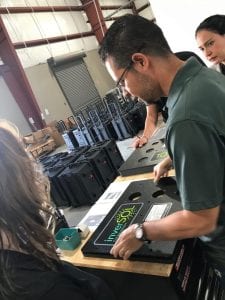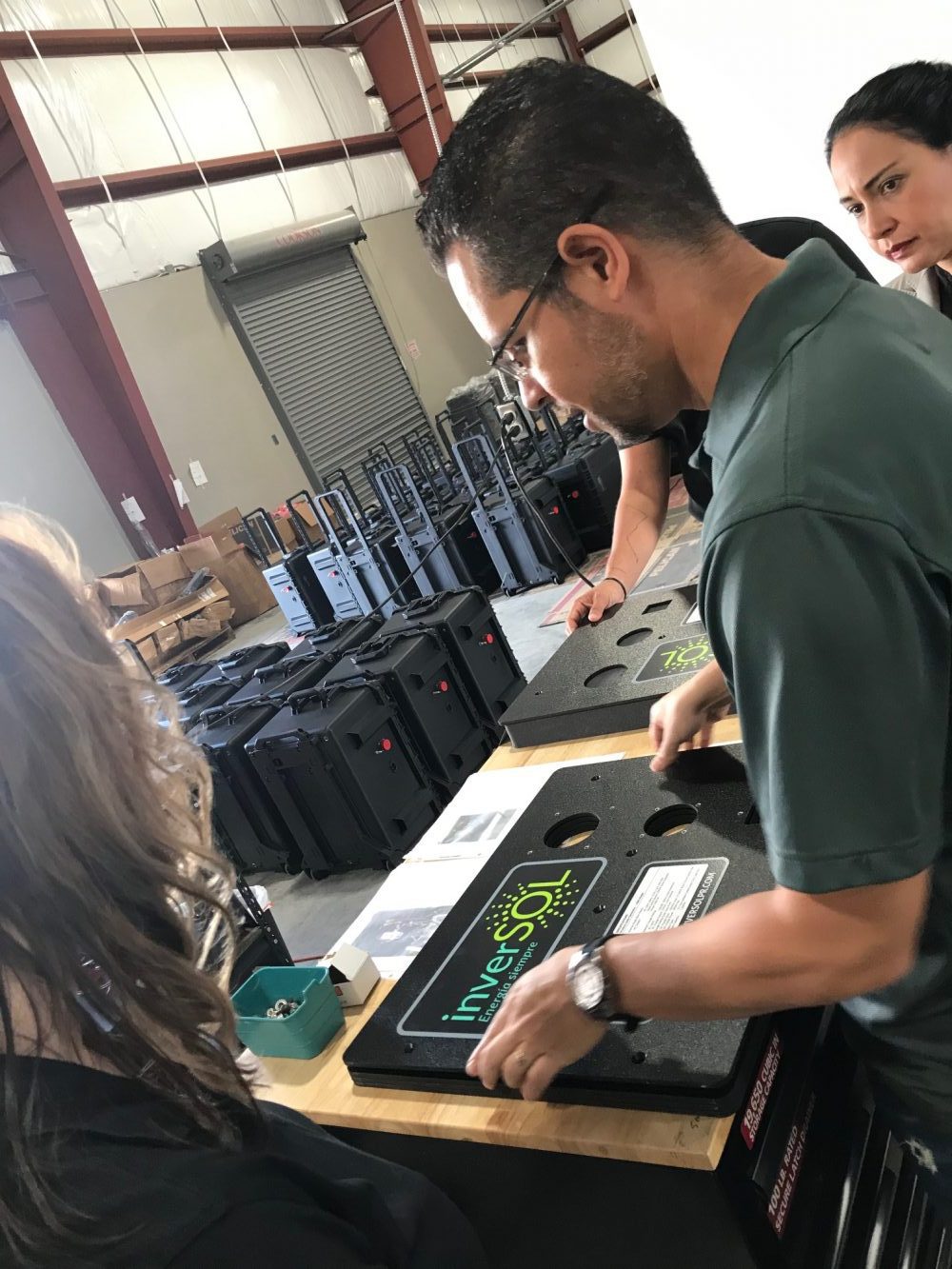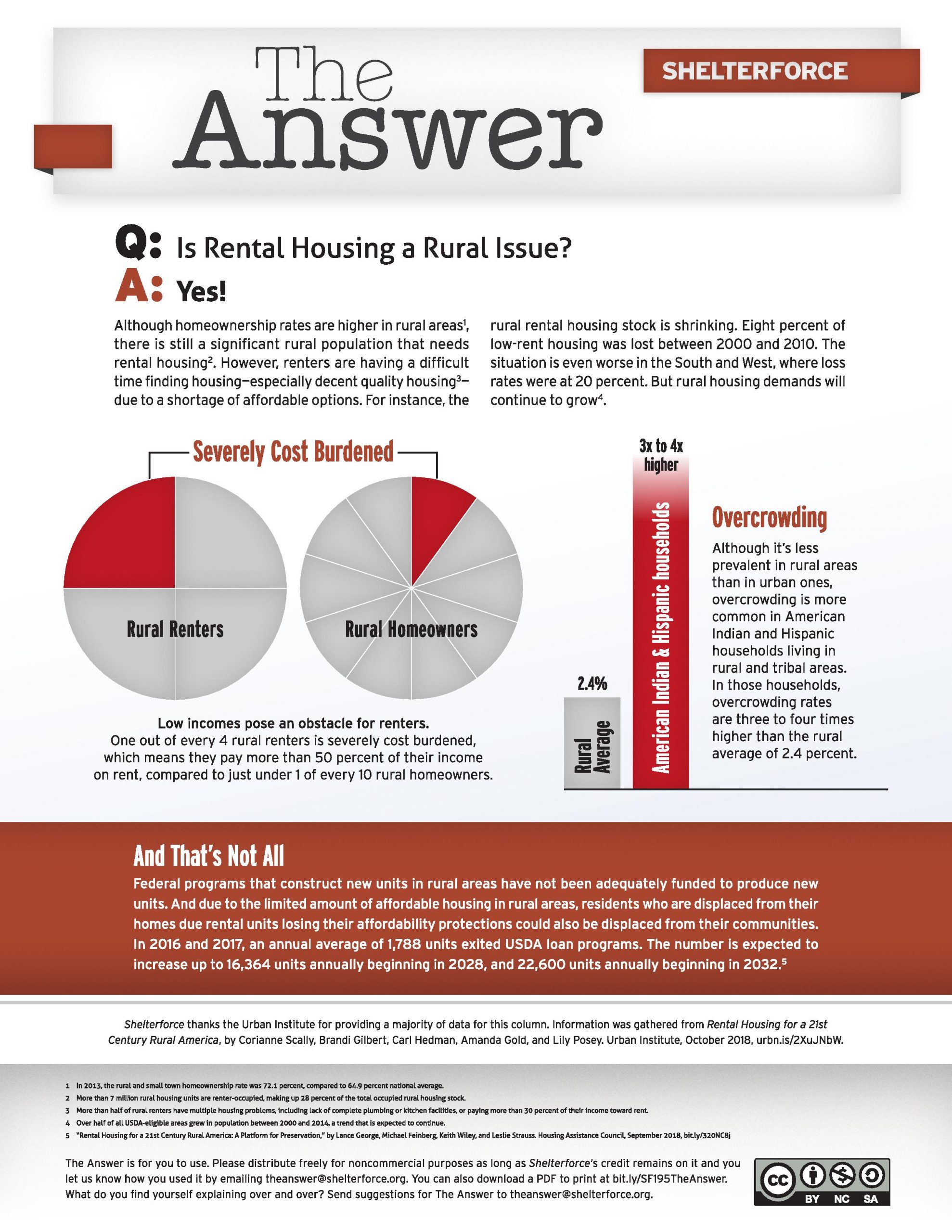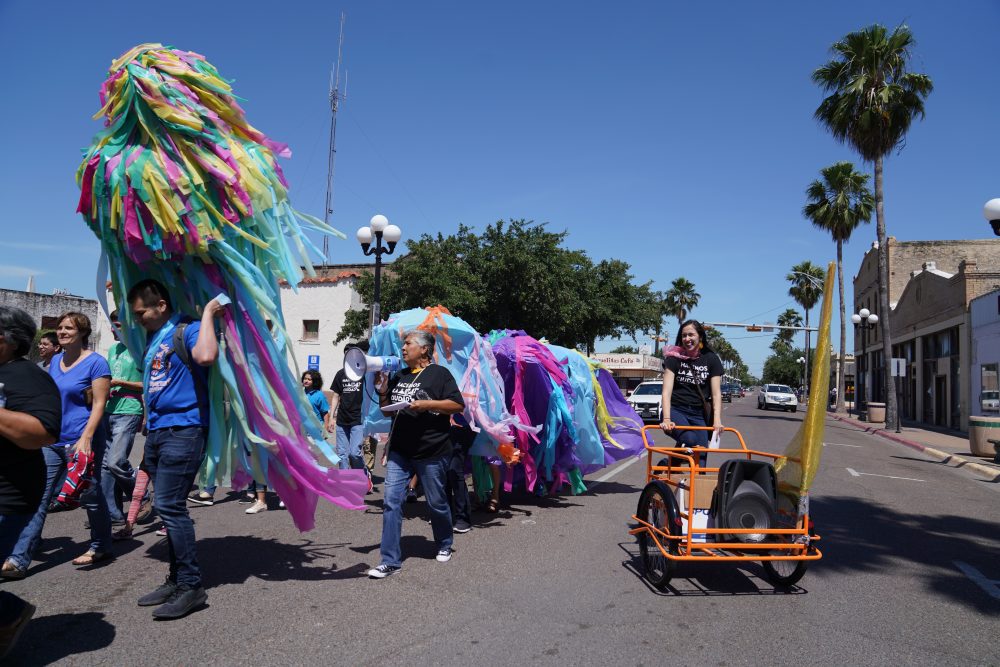
InverSOL began manufacturing solar-powered generators in Puerto Rico’s Commonwealth of Caguas to aid in resiliency efforts after natural disasters. Photo courtesy of Rural LISC
Those of us who live in rural places tend to love their great expanses of field and forest, not to mention the smaller communities that make it possible to recognize nearly every face at the local post office. But when a storm strikes, floods rise, or a fire tears through a rural region, rurality can work against us. Folks are more likely to find themselves isolated as there are fewer people nearby who possess the expertise needed to help families and communities recover.
Suppose you’re in the middle of a metropolitan area, standing knee-deep in floodwater, your home uninhabitable. You can assume that your municipal government has the wherewithal to assess infrastructure damage, connect with federal recovery dollars, and get water, sewer, power, and transit systems back online. There should be a multitude of established nonprofits close at hand to help residents get immediate assistance and apply to an alphabet soup of federal agencies for money to rebuild their homes and businesses.
Now imagine you’re knee-deep in floodwaters on the outskirts of a tiny town in rural Texas that’s been shattered by Hurricane Harvey. Your town is run by only a handful of people, most of whom also have other jobs. Nonprofit and federal workers are stretched over a large, perhaps multi-state, region. The few plumbers, electricians, and builders who would typically serve clients within a 30- to 60-mile radius can’t pull off a major rebuilding, or even a minor repair for that matter—and may well be affected themselves. In an area like this, the loss of critical personnel and infrastructure in a disaster can set off an economic domino effect that threatens the viability of not just individual households, but of the community itself.
Rich or poor, city mouse or country mouse, no one is immune from so-called acts of God. But research suggests that federal aid for recovery goes disproportionately to relatively prosperous, white, educated people, exacerbating inequality in disaster’s wake. At Rural LISC, a national community development financial institution (CDFI) where I serve as vice president, we focus on building rural capacity, and we see this disparity playing out across the rural-urban divide as well. Especially disadvantaged are one-third of rural counties that are also places of concentrated, persistent poverty (with rates of 20 percent or higher), roughly double the proportion of high-poverty urban counties.
To correct this disparity, we believe federal recovery grants and loans—from FEMA, the Small Business Administration (SBA), the U.S. Department of Agriculture’s Rural Development program (USDA RD), the Community Development Block Grant-Disaster Recovery program (CBDG-DR), and others—need to come with resources to augment rural communities’ readiness to apply for and deploy those dollars on the ground.
Rural LISC has been responding to natural disasters for years. Our first step, even before the rains or flames or tremors subside, is to reach out to local nonprofit partners, who often find themselves suddenly tasked with a massive front-line response: What are their immediate needs? How can we help prepare them to take part in both short- and long-term recovery?
Rainy Days in the Lone Star State
After Hurricane Harvey dumped as much as 60 inches of rainfall in areas across southeast Texas, our regional partner covering seven states—Communities Unlimited—had to assess 171 rural water systems and work intensively with operators of the 30 or so systems that sustained substantial damage. In Patton Village, which lies northeast of Houston and has a population of 1,800, one in three families live below the poverty line. For two decades the town had actively pursued financing for a wastewater system to replace the septic tanks that had been spilling sewage into ditches. The new system had just been completed when the storm hit, destroying pump circuitry and flooding a municipal well.
To take advantage of federal resources to restore these water systems, the towns had to gather a wealth of documentation that catalogued damage and community impacts, including door-to-door water inspections at the faucet. If town governments were even aware of these requirements, in the midst of ruin, they lacked the capacity to get the job done. In addition, many small rural water systems depend on customers paying their water bills to service USDA or other financing for the systems. When people flee a disaster (or aren’t getting water), they stop paying. But municipalities can’t apply for recovery assistance if they’re delinquent on federal debt—another hitch easily overlooked in an emergency. So the job of Communities Unlimited was to help these municipalities get their ducks in a row by preparing application packages for recovery assistance and forbearance on loans, while also rigging provisional fixes to restore service where possible.
The role of Rural LISC was to help the helper by quickly providing resources so Communities Unlimited could add the personnel required for this labor-intensive outreach. These critical, timely, capacity-building dollars came not from federal recovery funds but from private philanthropy, primarily the regional T.L.L. Temple Foundation and national funder JPB Foundation.
While municipalities worked on infrastructure, families had the job of figuring out how to restore their homes to habitability. There were older houses on slab foundations already weakened by previous flooding, caved-in roofs, flimsy pre-1976 manufactured homes swept from their footings, compromised private wells and septic systems, and everywhere the incursion of hazardous mold—all complex problems requiring extensive and sometimes specialized work.
Homeowners could apply for short-term repair money (along with other assistance) from FEMA and, as of a few months ago, CDBG-DR funds for more substantial rehabilitation. But putting together documents and satisfying other application requirements is especially tough for rural people who may be displaced very far from home, have spotty or no internet and cellular service, or lack a way to get to disaster resource centers.
The nonprofit Texas Housers, through a Freedom of Information Act request, found that in the wake of Harvey, low-income homeowners and renters were disproportionately denied FEMA assistance for a host of logistical reasons that also affect rural people—applicants couldn’t be contacted by an inspector, were unable to produce verifiable ID or proof that they lived in the house prior to the storm, or missed appointments to meet a government inspector at the site, for example. Similarly, in the large city of Houston, CDBG-DR funds are distributed through community-based organizations that can offer technical and logistical assistance to applicants; in rural parts of the state homeowners must apply individually, mainly by uploading a long checklist of documents to an online portal.
Just as accessing recovery funds is arduous for rural families, so is locating a reputable contractor to do the repair work, and managing the rehab job itself, another steep learning curve that could not come at a worse time. To unroll our own housing recovery program in six rural counties outside Houston, funded principally by the Red Cross, Rural LISC had to vet 85 community-based housing groups to find two with the capacity and willingness to tackle the job. They had to have the appropriate audits in place to receive federal monies (USDA funds are part of the pot) and have relationships with contractors ready to travel to rural job sites. One contractor we were vetting said he would take the job if we could send him at least 10 inspections at a time. I had to chuckle. We could provide this volume of work, but the sites might be many miles apart.
We designed a program suited to rural needs. Our housing partners do outreach through local town halls and newspapers. It’s not uncommon for a neighbor to give us a heads-up: “Mrs. Jones is down the road, it’s the green house. She lives alone and needs somebody to go down and help her with the paperwork.” With private funds, we can help people who are undocumented, for example, or who live in manufactured homes not titled with the land—barriers to accessing federal benefits that may leave families little choice but to hunker down in tarped, sodden homes. Our housing partners provide guidance throughout the process, including oversight and inspection of both construction and mold remediation. For those whose homes need more work than even our private funders Capital One and United Way of Greater Houston could cover, we advise on how to apply for CDBG-DR funds. One such family has already had four visits from a federal liaison. It’s a process, and a long one.
Legal, Technical, Back-Office Support: Filling the Gaps
Time and again in rural disaster areas, we’ve found that it’s this human infrastructure of connectors and troubleshooters that requires a boost for a robust and inclusive recovery.
After Hurricane Maria laid waste to the island of Puerto Rico in September 2017, we immediately contacted our housing and workforce development partner on the ground, PathStone. Because overland transit from island ports proved impossible, we could not answer the call to get generators to the remote mountainous and coastal areas PathStone serves. (I did fly to the island with three duffel bags packed with construction supplies including drill bits and tarps.) But we could dedicate a knowledgeable point person to advise and advocate from the mainland, and we could augment PathStone’s local staff so they could do some of the same kinds of in-person work that our partners in Texas are doing.
A strong on-the-ground nonprofit network will be especially important in Puerto Rico as the beleaguered commonwealth, accustomed to deploying about $1 billion in annual CDBG funds, now prepares to roll out some $20 billion in CDBG-DR funds for long-term infrastructure and home repair—all without substantial support to beef up its own back-office staff and systems, and on an island with high poverty, many elderly, and where a substantial number of dwellings were built informally and passed down the generations without benefit of a title. The latter issue has been a common reason for denial of FEMA assistance to Puerto Rican households.
Supporting and bolstering the local economy after a storm is also vital. In November 2018, Rural LISC partnered with PathStone to provide a joint small-business loan to inverSOL for the development of a manufacturing plant in Puerto Rico. A maker of solar-powered generators, inverSOL is creating disaster-grade generators that are of necessary use to Puerto Ricans, while at the same time creating much-needed jobs on the island. And LISC has secured a $1 million grant from Wells Fargo to support small businesses in rural Puerto Rico recover from the hurricane aftermath and help entrepreneurs who are responding to opportunities arising from recovery efforts.
In Butte County, nestled in the Sierra Nevada foothills of California, Rural LISC has a sophisticated and experienced affordable housing partner in the Community Housing Improvement Program (CHIP). But nothing could have prepared CHIP for the terrifying and destructive Camp Fire that erupted there last November, incinerating 14,000 homes including those of several staff members and CHIP’s own 36-unit affordable housing complex in the town of Paradise.
Rural LISC provided funding for legal and technical advice to help CHIP maintain its award of funds under the federal Low Income Housing Tax Credit (LIHTC) program so that, one day, it might resupply affordable units in an area that suffered an acute housing shortage even before the fire. Consultants also helped CHIP get the government’s green light to waive income eligibility requirements for fire refugees so it could accommodate these survivors in other affordable housing properties without jeopardizing their status with the federal agencies that helped fund the developments.
Working out these details was a tall order for CHIP staffers who were also scrambling to keep their own families safe and sheltered, but important for the long-term future of Paradise. The literally scorched-earth razing of this beautiful valley will require rebuilding essentially from scratch, and survivors of modest means are rightly worried that a carefully planned “new and improved” Paradise will be unaffordable to them.
Preparing for the Next Time
Unfortunately, we now have plenty of experience in disasters affecting rural areas—enough to recognize that planning for the next storm, flood, fire, or earthquake must include action steps—and, ideally, dedicated funds—to nimbly ramp up the capacity of small-town governments and local nonprofits, and to assist families in navigating the maze of requirements to get help.
One thing rural communities themselves can do to get ready: establish low-interest regional revolving loan funds, accessing the funds from other federal housing resources (HUD’s HOME Investment Partnerships Program, CDBG, USDA Housing Preservation Grants) and low-cost loan programs to create a permanent one-stop shop that offers choices to residents of, say, a three-county area. Between storms, residents could get loans or grants to elevate their homes or otherwise gird them against disaster. And when that next storm does come, they’ll know where to go locally for ready assistance for rebuilding or buyouts. All this creates a viable lending infrastructure available for investment of future CDBG-DR funds.
Yet the most important piece of preparation for any community is making the time to build relationships: expand your network with state and federal disaster partners who will be active when an event happens; know who to call in the state capital or in the Voluntary Organizations Active in Disaster (VOAD) network in your area (especially on weekends); map out where update calls will come from and who they’ll go to. Being tied into the right people, who will then include you at the table from the beginning, is one of the most important preparation steps any community can take to avoid being left behind or caught unawares.
Months after the Camp Fire, FEMA is still struggling to locate land parcels within Butte County that have power and drainage to accommodate trailers for temporary housing. In rural Texas after Harvey, our on-the-ground partners reached some areas before FEMA got there.
In the aftermath of disaster, time is of the essence, both to stem an exodus of residents that can change the character of a rural place forever, and to lay in place the tools (including paperwork) for rebuilding. Our national disaster-recovery apparatus should reflect rural realities, the most basic of which is this: local folks are not only first responders in hard-to-reach rural areas, they are also the critical players in helping communities hang on long enough, and prepare adequately, to see that brighter day when hammers ring in the air.






Comments